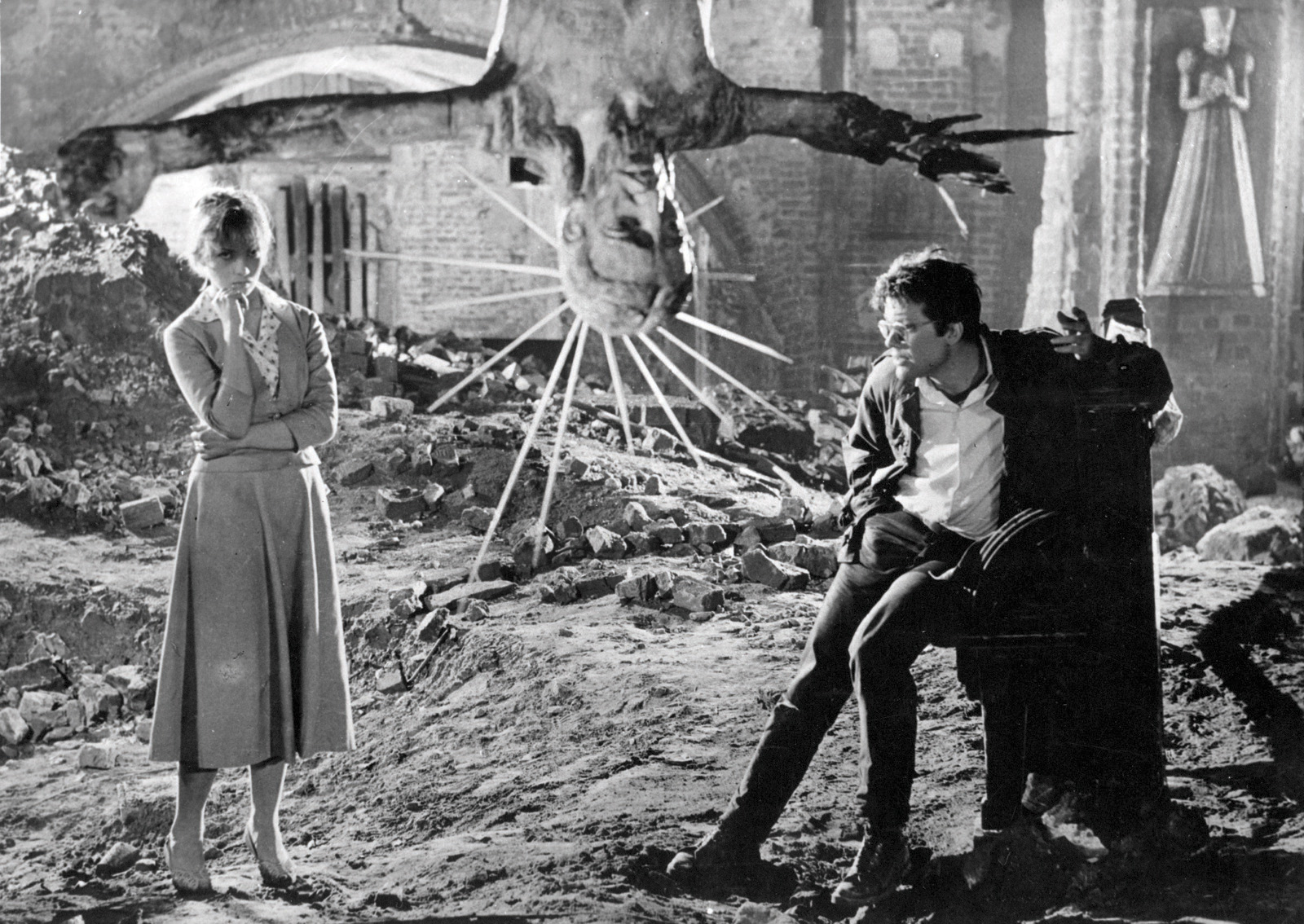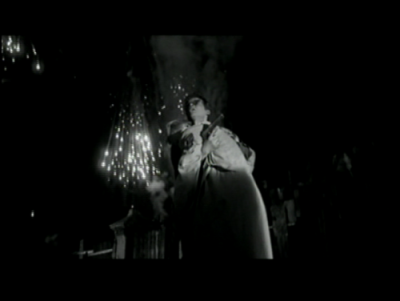This was written in the summer of 2000 for a coffee-table book edited by Geoff Andrew that was published the following year, Film: The Critics’ Choice (New York: Billboard Books). — J.R.
Set in a small provincial town in Poland the day after the country’s liberation in the spring of 1945, Ashes and Diamonds, Andrzej Wajda’s third film, may still be the most influential of his career. Yet, curiously, its impact both today and some 40 years ago seems predicated in part on the slightly anachronistic effect produced by superimposing the mid-fifties over the mid-forties — specifically, existential angst laid over a gloomy sense of exhaustion at the end of the war.
Above all, the black-leather-jacketed figure of Zbigniew Cybulski as Maciek, an uncertain resistance assassin — clearly derived from the Marlon Brando of The Wild One (1954) even more than the Brando of On the Waterfront from the same year, or the James Dean of East of Eden, and Rebel Without a Cause from the following year — reinvented postwar Poland in hipster terms. And the resulting image of the actor (who died prematurely in a railroad accident less than a decade later) was fixed in the popular imagination for good. Indeed, the 19th-century Romanticism that is said to infuse much of Polish literature — not only the 1940s novel of the same title by Jerzy Andrzejewski that Ashes and Diamonds is based on, but the poetry of Cyprian Norwid (the source of the title) and the plays of Juljusz Slowacki and Stanislaw Wyspiański — received a kind of updating from Cybulski’s definitive performance as Maciek.
Told to assassinate an arriving Communist secretary named Szczuka (Waclaw Zastrzezynski), Maciek and another gunman ambush a jeep in the film’s opening moments, only to discover that they have shot the wrong man. After Maciek is ordered to make another attempt, he and Szczuka take separate rooms at the same seedy hotel, where an extended, drunken celebration is underway, and most of the remainder of the film is devoted to crosscutting ironically between assassin, victim, and banquet-in-progress over that night and the following morning, during which time both characters end up dying.
Rather like Hamlet, Maciek keeps putting things off, experiencing enough doubts about his mission to make him an existential prevaricator of the first order. He has a brief, touching fling with a barmaid (Ewa Krzyżewska) over the long night, and finally shoots Szczuka in the street only after the party has broken up at dawn. Szczuka, has a son who is in the same anticommunist underground as Maciek, so the degree to which the relationship between killer and victim is Oedipal is emphasized.
A baroque director, Wajda frequently recalls Orson Welles in his use of low angles and deep focus, as well as in his fancy sense of dramatic detail and counterpoint: A Christ-like figure hanging upside down from the rafters of a bombed-out building, an explosion of fireworks occurring at the same moment that Szczuka dies in the arms of Maciek’s murderous embrace.




